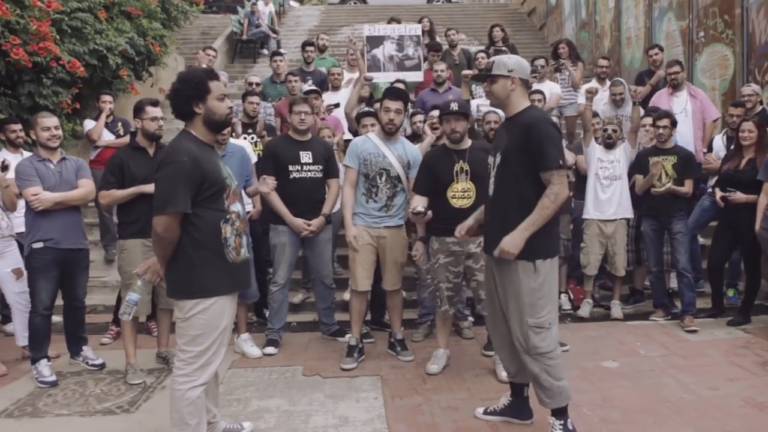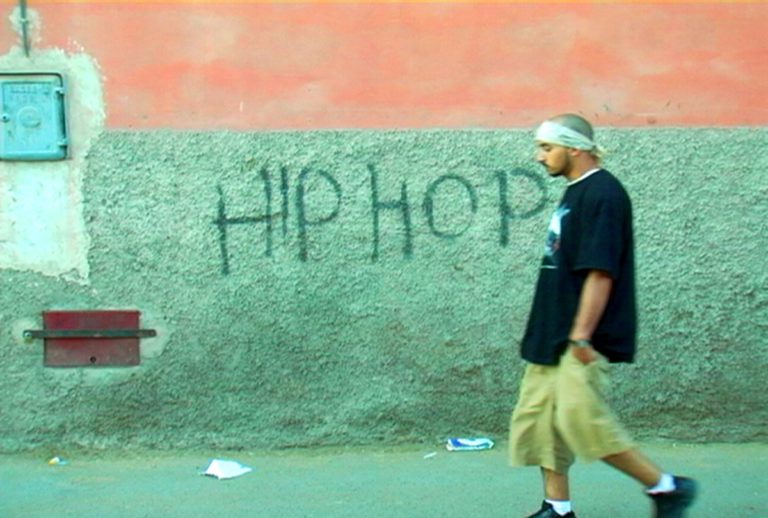This paper seeks to engage the construction of urban “soundscapes” as a potential flashpoint for class conflict by analyzing auditory and visual representations of “the neighborhood” (al-houma) in a handful of Moroccan hip-hop videos. I begin by situating Moroccan hip-hop within transnationally circulating associations of hip-hop with “urban” life, as well as the political dynamics of North Africa’s colonial and postcolonial urban histories. I then analyze four videos comparatively, suggesting that each goes beyond lyrical and musical content of the songs to construct a sensory experience of the city—or neighborhood—for the listener-viewer. In giving attention to the political implications of each video, however, I argue that what distinguishes each is less what sort of “soundscape” emerges in his video but how each video teaches the audience to “hear” the Houma. While videos by mainstream rappers Muslim and Don Bigg figure urban space as threatening and in need of moral recuperation, they enact these pedagogies largely through indexical figurations of their respective soundscapes, that is, by directing the listener to attend to certain (inaudible) sounds and to interpret them in a certain way. By contrast, a video by El Haqed, known as a more staunchly oppositional figure, visually and sonically constructs a peri-urban lifeworld conditioned by neoliberal economic abandonment yet resistant to the postcolonial gaze. This contrast, I suggest, raises crucial questions about how hip-hop is linked to broader dynamics of cultural appropriation and “resistance” politics.
Keyword: hip hop
On Blackness and the Nation in Arabic Hip Hop: Case Studies from Lebanon and Libya
In this contribution, Chris Nickell and Adam Benkato think together about the mobilization of Blackness in Arabic hip hop from two different contexts: a rap battle in Beirut, Lebanon and music videos from Benghazi, Libya. In both, hip hop artists confront Blackness with the nation through the Afro-diasporic medium of hip hop. Although the examples we consider here participate, in several ways, in hip hop’s larger generic functions as a globalized Black medium of resistance, they also bolster pre-existing discourses of race and racism, anti-Blackness in particular. We argue that this seeming contradiction—instances of anti-Blackness appearing in an iteration of a Black expressive form—is in fact a feature, not a bug, of the flexible way the genre works. We have paired these two examples, which we describe and analyze individually given their differing social contexts as well as our differing research focuses, in order to glimpse the discursive level at which racecraft functions.
From ‘Hip Hop Revolutionaries’ to ‘Terrorist-Thugs’: ‘Blackwashing’ between the Arab Spring and the War on Terror
Rayya El Zein takes up a global analysis of how ideas of blackness, whiteness, and Arabness circulate in post-9/11 media accounts and argues that these concepts work to mediate Western understanding of politics in the Arab world. El Zein unpacks the paradox by which blackwashing is differentially deployed to mark certain Arab subjects as a “good rapper” or a “bad rapper,” and how both of these valences serve to expand neoliberal orientalism through the political familiarity promised by blackness. As an alternative, El Zein suggests attention to the material, historical, and geographic specificities of the power struggles that structure racial capitalism, classism, and racism, especially and essential because of their potential international unrecognizability.
Toward a Queer Temporality of Hip Hop: An Annotated Playlist
Hilary Berwick’s annotated playlist suggests that black musical practices enact temporal interventions within which currents of desire, identification and memory reshape the boundaries of what is representable. Indeed, Berwick’s discussion of haunting as a primary mode of hip hop representation demonstrates the potential contributions that engagements with sonic culture could make to explorations of the erotic and psychoanalytic dimensions of black historical memory and practices of remembrance, particularly as it relates to reckoning with trauma.


